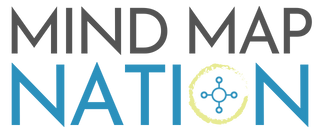Mastery’s Compounding Effect
In learning new skills, we all go through a period of “suck” before things get better . One of our brilliant MMN community members shared a post that not only ties the mathematical concept of compounding to skill development, but also reveals how it’s the foundation of habit formation principles found in books like Atomic Habits.
By anticipating an “exponential” learning curve rather than a gradual linear one, we become better equipped to face the initial challenges and avoid giving up too early in our skill development process.
So without further ado, here’s Hector’s insightful perspective:
I like the Compounding mental model as it seems to be the basis for all of the habit formation principles we have been learning from great books like the Power of Habit or Atomic Habits ; the underlying principle that enables habits to create meaningful change is the concept of Compounding.
Humans have a hard time understanding the subtle effect of compounding because it takes time to work and our minds are used to linear thinking/growth. If you are starting to learn a new task, programming language, new workout routine, sport, etc. it takes time to see progress, but if you keep investing in that activity consistently, then you will see exponential growth at some point.
The graph below really opened my eyes to this phenomenon and explains why so many people give up at the beginning of a new project or skill as they don’t see the progress for some time: the red compounding line is actually worse that the blue linear line at the beginning. This is similar to taking a taking one step back to take two steps forward. But if you keep investing/compounding that skill, you will eventually see exponential growth.
So yes, habits are atomic because of compounding. It’s a good mental model that can help in two ways: 1) deciding if the “shiny new thing” is really worth pursuing vs compounding existing skills and 2) if you do decide to take on a new skill, then understand that you need to stick with it long enough to see the effects of compounding.
This second point is my interpretation of what George Leonard wrote about in his book Mastery , in which he says that anyone wanting to achieve mastery must learn to love the plateau because that is where he/she will be on for the majority of their training time before they see any results. The plateau seems analogous to that first part of the red curve and mastery is where the curve takes off.
🤔 What I’m Mapping
Thinking in “opportunity time cost”
Speaking of mental models, turns out AI is really good at countering our natural cognitive biases in order to make better decisions. We can feed ChatGPT a blog post or presentation and ask it to provide stories of how it could go badly (i.e. counter arguments and counterfactuals).
The article also reminded me that it’s hard for us to think in terms of opportunity costs:
“It is no wonder that this paper surveyed every economist in Sweden to find the most important economic concept for everyone to learn discovered the overwhelming choice was… opportunity cost…
The concept of opportunity cost is notoriously difficult to use in practice, since it requires actively considering uncomfortable and annoying information that undermine the joy of acting on our choices.”
Economists typically consider opportunity cost in monetary terms , but I view it as a “time cost.” 2 Week Sprints prove beneficial as they clearly reveal our opportunity costs when we agree to unplanned activities.
For instance, I would usually accept a friend’s invitation to hang out on a weekday night without hesitation. However, during a Sprint , I become acutely conscious of my priorities. Although I can still choose to socialize, I would do so with more intentionality of its impact on my long-term goals.
Self-made obstacles to free time
In last week’s “What I’m Mapping” , I noted that technology has largely failed to give us back our time:
“Bill Gates wrote in how AI will revolutionize everything :
‘When productivity goes up, society benefits because people are freed up to do other things, at work and at home.’
This seems to be the promise of technology at large since the industrial age, but hasn’t materialized .”
Now with rise of generative AI, the conversation of 4-day work weeks is back on the table. But the main thing that could stall its adoption is our own mindsets, at least for Americans who prefer more income to leisure time and work in corporate cultures that highly value hard work.
Finding Purpose-driven work
This is my answer to the seeming contradiction between more free time vs more work:
That’s why I don’t mind working my tail off and putting off fun things during Sprints. When you’re working on meaningful things, the work becomes a source of energy rather than a drain. Purpose is the ultimate sustainable stimulant.
Make the most of your mind maps
Thanks for reading this article. If you found it useful, you can get a new mind map in your inbox every week. Epiphany is your dose of structured thinking and ordered chaos.


